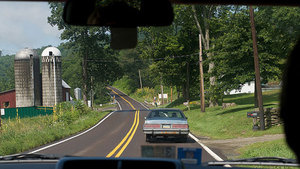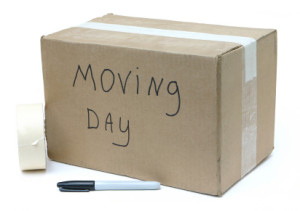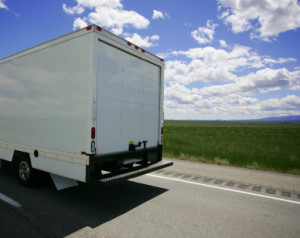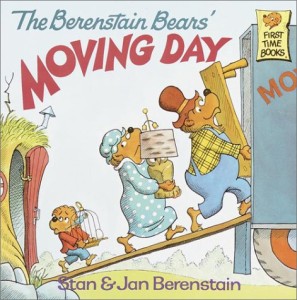By Relocation.com
When you sign a lease agreement, most likely you’ll be signing on for a set period of time, such as six months or one year. That means you’ll have to stay on for this amount of time or risk breaking your lease.
While many people do intend to stay long-term in their apartments or homes (after all, moving all the time can be costly) there are some unforeseen circumstances where you might be forced to break your lease before it us up, such as illness, job loss or other emergencies. If you absolutely have to break your lease agreement, here are some of the things you should consider.
Alternatives:
Before you try breaking your lease, there may be other things you can do first. You can ask your landlord if you can transfer the lease to someone you know (and have them move in and pay off the remaining rent for the lease term) or find a sub letter, who will be your responsibility for the time of the lease. In many cases, landlords hate breaking lease agreements because they don’t want to lose the income from the rent and/or don’t want to be bothered with having to look for tenants. If you make it as easy as possible for them, you may be able to get out of your lease unscathed.
Circumstances When You Can Legally Break Your Lease
There are three main circumstance wherein you can break your lease without penalty:
1) If the apartment or whom suffers serious damage through natural disasters, crime or other instances through no fault of your own.
2) If you suffer serious health issues which require you to live in an assisted living facility.
3) If you are called into active military duty after you’ve signed your lease
In these three cases, you can legally break the lease and your landlord cannot go after you for penalties.
Landlord Deficiencies:
If your landlord has been deficient in his or her duties, then you can also break your lease since he or she is not keeping up their end of the bargain. For example, if you’ve repeatedly sent requests for repairs and they ignore you, or if they’re supposed to pay for the utilities but haven’t (or have been keeping the payment for themselves if you give it to them) then you have just cause to break your lease. Make sure you keep good records (like written or e-mailed requests for repairs, etc.) so you can make your case, in the event that you have to go to small claims court or have been served with other legal documents and actions.
If you just want to break your lease because you want to move somewhere else, because you can’t pay or perhaps going through a divorce or separation, you may find it harder to break your lease. However, first talk to your landlord and offer the aforementioned alternatives, that way you can have a peace of mind when you coordinate other aspects of your move like locating moving companies.
By Relocation.com
For seniors and elderly people, moving can be a difficult time. There are many reasons why they need to move – illness, downsizing, or perhaps just moving in with another relative. If you’re helping an elderly friend, relative or parents move, then you have to be sensitive to their situation. Aside from that, moving can be stressful, and someone older may not be able to deal with the physical and mental stress, so try to help as much as they can. So, try to keep these tips in mind when helping the elderly move.
Start As Soon As Possible:
Starting as soon as you can will ensure you’re not rushing and that you won’t forget things. You can start by planning things out. Work out the important details first – the where, when and how before you even being to pack up moving boxes. Try to get some help or get a moving company to help you if the work really is too much. This will save you time in the long run and you’ll have more time to devote to your elderly person’s emotional and physical needs, rather than running around trying to move everything yourself.
Don’t Forget the Non-Material Things:
There are some essentials you can’t pack up in a box, so don’t forget to arrange for them. Medical and dental records are probably the most important, but also remember prescriptions and bank accounts, some of which can only be done by the person. You may have to take time to drive them around and get these switched to the new address.
Help Them Downsize:
Over the years, he or she may have acquired a lot of things. Chances are, not all of them are important, and some may have to be sold or thrown away. Help them sort things out. You can have a pile for throwing away, giving away, keeping and selling at a yard sale. This will also ensure that they can save some money on the move.
Take Care of Keepsakes:
Of course, there will also be some things that he or she may want to keep, such as photos, jewelry and other keepsakes. Take extra care of these as these may or may not have monetary value, but they certainly have sentimental value. Don’t pack them with the movers and keep them with you at all times.
Keep Them in the Loop:
Your elderly friend, relative or parent move, don’t keep them in the dark. You may think you’re that you’re protecting them or you think it’s not important, but they may feel confused or resentful if you keep things from them. Tell them all the details, like how you’re going to move, which moving company you’re using, and also take them through the details of moving day so they know what to expect.
Keep Essentials With You:
Don’t pack everything away – there may be some things they’ll need on the day of the move. Medications, sweaters, blankets – these may be some items that they need and will keep them comfortable during the move.
By Relocation.com
For many people, the prospect of moving to a city or town they’ve never been to may seem exciting and scary at the same time, and perhaps even terrifying if you’re moving somewhere without a job offer of some kind. However, many people today have no choice, especially if their specialties or interests are not in demands where they work or if the jobs are simply drying up in their area. Should you move somewhere without a job? People move all the time, and often without jobs. If you do decide to do this, make sure you make the necessary preparations before you start packing your bags.
Research the Market:
Make sure you do your due diligence before you even consider moving. Research the job market in the area you want to move to. Are your skills and experiences in demand in an area, or are jobs in your field plentiful? Another consideration is the types of jobs you’d be willing to take and of course, what is the minimum salary you need to be able to live in the area. You can find out the answer to these questions by browsing the local employment ads, calling up employment agencies or doing your own research as to the statistics in the local economy. Also, you may want to give your resume test. Send out your resume to local employers and see how they respond. Don’t forget to let them know when you’re moving into town or if you are available to travel to their city for an interview.
Compute Total Costs:
You’ll also have to figure out how much the long distance moving companies are going to cost you, as well as how much you need to live on while you’re looking for a job. A good rule of thumb is to budget around six months of living expenses (rent, food, utilities etc.), but this really depends on your background and what job or jobs you’d be willing to do. If you background is too specific, you may find a harder time finding a job, but if your skills are highly in demand or you’re willing to do different types of jobs, you might find a job within weeks. Either way, it’s better to be over prepared.
Finding an Apartment:
Most landlords will require potential tenants to provide employment information before letting you move in, which may be difficult if you don’t have a job yet. Try to explain the situation to your landlord and offer up the necessary paperwork for an apartment, like references or bank statements; you can even offer to pay a few months rent in advanced so they know you are serious about looking for a job.
Networking:
You’ve heard the saying that sometimes the best jobs are never advertised – this is almost always true in many cases (or they will be advertised, but they will eventually pick someone within the company.) So, use networking to your advantage. Call up people you know or friends of friends (or even friends of friends of friends) and ask them if they know any company who is hiring people in your field. Also, use the Internet. LinkedIn, for example, is a great professional networking site and is rich in information and networking opportunities like joining groups or attending web events and seminars. Use the power of your connections or don’t be afraid to make connections yourself so you can land that dream job interview in your new city.

By Relocation.com
After all of the tasks related to moving are completed there is the question of decorating that you will have to deal with. Decorating a bedroom can be a fun bonding activity between you and your teenager. For a teen, their bedroom can be their sanctuary, and so you want to make sure it is a place where they feel comfortable in. You can be involved with making the decisions, but you should also consider what your teenager likes (if you don’t know – ask!) So, here are some quick tips to help you and your teen with this decorating task.
Budget.
Setting a budget is important, so you don’t go overboard and your teen will have a realistic expectation what he or she can do with their room. If you’re doing major renovations, then you’ll probably have to set a bigger budget than if you’re just going to paint or wallpaper the room.
Design and Color.
What type of teen do you have? Is she a girly girl or a punk rocker? Does he love sports or playing video games? Let your child choose what theme and design his or her room will be. Don’t let them decide everything; after all, it’s your home. For example, painting the room black may not be a good option if you plan to sell the house in a few years. Getting hot pink carpet may be your teen’s idea of a fun time, but think about how it will affect the value of your home. Have them come to you with different ideas and then you can choose together. The idea here is to compromise.
Space.
Aside from what color walls or accents you’ll have, you’ll also have to consider the space. Your teen will want a bed and a place to study. If you’re buying furniture, you have to make sure that they’ll have a place in the room. Storage options are also important. If the room doesn’t have a built-in closet, they’ll need a clothes closet. You’ll also need shelves for books and other things they want to display, and perhaps some out of the way storage for things they don’t use often or for seasonal clothes. Under the bed storage can help you save space in this case. If the room is large, maybe you can add an exercise or lounging area as well.
Accessories.
Much like in fashion, accessories can make or break a room. If you’re just doing minor decorating, things like curtains and sheets can really change a room. Get sheets, pillowcases, curtains, towels, even shower curtains that match your theme and design. Or you can add a touch of color with small things, like lampshades and carpets to make a big difference.

Pass the time when moving in a car with some of these creative activities
By Richard Farrell
Special to Relocation.com
Moving across the country in car is one way to save money. However, when you add kids into that mix you have to consider that they may get bored – especially when you will be driving for hours on end. Check out some of our creative solutions to make it easier to get to your new home when driving.
Planning the Trip:
- Once you have chosen your route, it is time to calculate how long you are going to be a passenger or driver in the car. Allow for unforeseen delays such as traffic backlogs and diversions along the way. Once you know your likely journey time you can plan around it better.
- Pack a cooler of healthy snacks and lunch options for your initial ride. Once you get on the road, plan to use drive-through food outlets along the way as this will save a lot of time. Keep a couple of trash bags handy for any garbage.
- Wear sensible clothing and shoes for the journey. Choose comfortable shoes and clothing that are easy to slip off so that you can relax and let your feet breathe. Long trips will likely result in posture issues and your feet will soon remind you of the fact that you are not comfortable. Shoelaces are not practical in these circumstances.
- Should you be sharing the driving, do make sure you stop in a safe place and take time out to walk about and do some breathing exercises before you take the wheel. Include some stretching exercises too..
- Consuming of alcoholic beverages immediately before or while traveling makes for another definite “no.” Apart from affecting your reaction time it is breaking the law and your journey to your new destination will be remembered for all the wrong reasons!
7 Fun Tips to Pass Time in a Car:
- Bring CD’s. Sort through your CD collection and pick out some favorites and maybe a couple that you have not played for some time.
- Radio. Satellite radio played through your car sound system is of excellent quality and clarity. Tune in to your favorite stations before you set off.
- Books and Magazines. Kids love books and magazines. Make sure you have plenty for the journey.
- Music DVD’s. You may be lucky enough to have a sophisticated in-car system. If not, then there are plenty of good quality portable players for you to enjoy the latest movie offerings as well.
- Take Naps. Short napping is good, but sleeping the entire journey may be considered antisocial, and besides you will be missing the passing scenery and could arrive feeling less than your best.
- Food. Choose snack food that does not make a big mess. Dry snacks such as chips and peanuts or glazed dry fruit are great for the car. Avoid too much intake of food and drink or you will be stopping at every restroom along the way.
- Rotate Drivers Regularly. This is very important for long journeys. If you are the only driver you will need to consider breaking your journey with an overnight stop. In any event, do stop every 90 minutes but make sure you pull over in a safe place.



Moving can be positive - especially when you are moving into a bigger home.
By Dermound Becker
Special to Relocation.com
Just the thought of having to plan, organize, sort out, downsize and then pack everything into cartons and boxes can be daunting, but there are some positive aspects of moving that are both invigorating and exciting.
You can afford to buy a home. The most common reason for moving is when you can finally offer to transition from renting to buying. This is a huge step in the right direction to financial independence – and will most probably be the best financial move you will make in your lifetime. If one is able to purchase a property with a monthly mortgage repayment similar to the amount you are paying to rent, the net result is that you are basically paying yourself the rental amount and, one day in the future, when the mortgage is paid off you will have your own home and be able to live rent free for the rest of your days. This would clearly be a good change in your lifestyle.
You are moving for a new job. Another common reason why moving is exciting is when you have to relocate for a business or career. This might mean an increase in salary, a rise in one’s status, a chance to improve oneself and move up the corporate ladder. This would also mean a positive change in how you live and what you are able to afford.
You need to downsize. At the other end of the scale, people move when they find that they simply cannot afford to continue living where they are due to rising rents or mortgage repayments or the loss of a job. All is not lost though, as a move to a smaller residence or to a home of equal size in another, less expensive, neighborhood can also be a change for the good. There will be less keeping up with the Joneses and less overall expenses, thus freeing up money for things that you would like to do, such as being able to take a vacation, taking up a sport or hobby and having some spare cash to go to a restaurant or movie. Moving for these reason will encourage you to join clubs or volunteer for a good cause in your area in order to meet new people; and to spend time either alone or with your family while you explore and learn all about your new location – proof that change is good.

Sharing food with your movers is a great way to kick-off moving day.
By Richard Farrell
Special to Relocation.com
On moving day, it is highly likely that your kitchen will be chaotic on move day so preparing and actually cooking food there will not really be practical in most cases. In a perfect world we would love to have the entire moving affair catered with an endless tray of gourmet snacks and dishes. In the real world it is not going to happen like that though, because there are far too many distractions not to mention costs. What are the alternatives then? Greasy Chinese food sounds good or maybe a cardboard pizza, or wait, what about a tasteless sub? None of the above, so why not rather go with the following suggestions:
The quickest and easiest option to purchase ahead of time and share with your moving company.
Here are some food suggestions to keep you and your movers fueled for moving:
1. Colorful veggie and fruit trays. A blend of grapes, bananas, berries and apples will keep you full and energized.
2. Cheeses, crackers, various spreads and cold ham or salami are very to prepare. Have them out for your movers, volunteers, family and friends.
3. Have a variety of frozen appetizers handy that you can quickly heat up in the oven.
4. Chips and dips like salsa and guacamole.
5. Homemade pizza. If you have some time you might want to create something more substantial like homemade pizza…or better yet you can order a pie for the crew.
6. Spaghetti and meatballs. If you have time the night before, make a huge pot of this classic dish.
7. Nachos and chicken wings are quick and easy foods that every mover will love.
8. Desserts. Offer some brownies, Popsicles, cheesecake or ice cream.
9. Drinks. Make sure to have an assortment of lemonade, cold water, tea and coffee for the movers.

Gorgeous Views of Downtown Austin
This guest post was provided by our friends at Realty Austin, an Austin real estate agency.
Whether you are test-driving a new car or sampling ice cream flavors, sometimes it is nice to try before you buy. Moving to a new city is definitely one of those situations. You’ve probably heard that Austin, TX is an amazing city with lots to offer, (in fact according to the Austin Business Journal, it’s one of the best places to find a job), but truth be told, only you can decide if it is a good fit for you.
One of the best ways to test the waters before making the big plunge is by spending a few days visiting the city while you explore and meet locals. Think of it as research! You’ll get the most out of your experience when you rent a room or house in an Austin neighborhood you might be interested in living in rather than choosing a hotel. There are many great resources on the web that can help you find a great place to stay during your visit.
• HomeAway is an Austin-based company that connects travelers with luxury rental homes. The site offers over 250 places to stay in Austin starting at $50 per night. Each site has detailed photos of the property including amenities, nearby attractions; reviews from people who have stayed there before, and the opportunity to community directly with the owner.
• AirBnB is another great option and features over 490 Austin rooms, homes, and lofts in some of the city’s trendiest neighborhoods for as low as $30 per night. Each rental has the unique charm you’d never experience at a 5-star-hotel. Users can search properties by neighborhood, price, and even connect on Facebook to see where their friends have stayed in the past.
• Finally, Couchsurfing is a non-profit organization that connects travelers with friendly folks who allow guests to stay at their home free of charge for a few days at a time. All users set up online profiles on the site. Travelers can search potential couches to crash, read reviews by former guests, then make a request to stay at a home. One of the best things about taking this route is having a host who can guide you to the best spots in the city.
Visiting Austin before making the decision to move will give you the opportunity to live like a local and meet people who can give you their honest opinions on what it’s like to live there. Take advantage of the many great web resources discussed here and you’ll be sure to get the full Austin experience.

Moving to a new city is a great way to get a fresh start. Follow our tips to make the most of this exciting transition.
By Stephen Davis
Special to Relocation.com
Moving to a new city is like pressing a reset button in your life. It is one of the rare opportunities that you have in life to make a fresh start. The first few days after your arrival are the most important as they will define your subsequent life in the city. The three most basic things that need attention are:
• Accommodation: Finding a new home or apartment.
• Finances: Arranging and maintaining your resources.
• Social Life: Meeting neighbors, friends and discovering new activities.
Start by researching your new city. Visit the central areas, hotspots and recreation centers to get a feel of the city and know what it’s like to live there. Find out other vital information from the web. Things like crime and unemployment rates, major business activity, schools, libraries and emergency services are important to know. Ask friends and relatives who have lived there before or who have visited the area. Once you have some basic background information and a basic layout of the city in your mind, you’ll be in a better position to make the above three decisions.
Choose your new home. Not only the house itself, but also the location in terms of its neighborhood and its proximity to essential places is important. Ask yourself a few questions:
• How many rooms do you need?
• Do you need a yard if you have kids?
• Will you use public transport or your own car? How much are you willing to spend on transport?
• Do you prefer a busy city center or a quiet neighborhood?
Asking these and a few more similar questions will help you make the right choice. Remember that once you make a decision for your housing, it is hard to change it later. If you are not completely sure, try to get a few months lease before deciding on a mortgage.
Search for local amenities. Look for basic services like restaurants, dry cleaners, pharmacies, restaurants and post offices. You want to make sure that these amenities are nearby – especially if you are moving to a new city without a car.
Think about your income. If you have a new job know your salary details. Some employers give a decent loan to help you to settle properly in the new city. If such a loan would help you, ask your employer for details. If you don’t have a proper income source prepared, use your cash wisely until your cash flow is restored.
Discover your new social life. Without good friends and interesting activities, even the most beautiful and comfortable homes become boring. The first step is to organize a housewarming party and invite your neighbors. This is the best way to introduce yourself and have a chat with them. Ask them about the city and the opportunities there. Both career wise and recreation wise. Take their advice about clubs and societies that you may want to join. Ask about good cinemas and theaters, good restaurants and the best shopping places. Plan activities with them and make yourself at home.
Moving to a new city is an exciting time but requires some planning and organizing to ensure that your transition goes through successfully.
Don’t forget to like us on Facebook and follow us on Twitter!
• Follow us on Twitter @Relocation_News
• Become a fan of Relocation.com on Facebook

Get rid of your junk before you move.
We finally get to see the amount of stuff we actually have when moving. Throughout the years, many items are replaced and the older ones get dumped in the garage, basement or attic. We also buy new clothes, crockery, upholstery, furniture, electronic gadgets and decoration items that gets added to our pile of stuff. When everything is decorated and in its correct place at home, it all feels less. But that’s not true. When you begin packing your belongings during moving, you realize the true magnitude.
The first thing is to get rid of all the things in your garage, basement and attic that you haven’t used in months, or in some instances, even years. Here are some of the best ways to unload your old junk before moving.
Have a yard sale. When planning a yard sale, start by organizing your items into boxes and labeling them based on their price. You will then have to consider making signs and posting them around your neighborhood to get the word out about your sale. On the day of the sale, set up your items early (people will arrive before the designated time) and be flexible with pricing – this will help you get rid of more stuff quickly.
Donate your belongings. If you don’t have the time for a sale, consider donating your items to a shelter, an orphanage or a humanitarian organization such as the Goodwill or Salvation Army. These non-profit organizations usually need items like clothes, books, canned food, toys, tools, bags and more.
Give them away to family and friends. Many people prefer giving fairly new and useful items to their friends and families. Older models of cell phones, laptops and clothes that no longer fit may be useful to your friends, neighbors or relatives. You can also have a clothing swap party, which can also function as a good-bye party as your friends exchange goods with one another.
Toss it. Sometimes even the best of intentions to pass along your items will fail when you have old and smelly clothes or broken down items that can’t be salvaged. In these instances, it is best to toss your old and useless stuff. Look into recycling centers in your area for old electronics and paper goods.
After getting rid of the garage, basement and attic stuff. Make and inventory of your belongings. For an average family, about one-third of their belongings are still “excess” and its best that you get rid of them too to lighten your load.
Less stuff makes for easier packing, easier travel and most likely cheaper moving expenses. It is also a great way to start fresh without the excess of junk that may have been weighing you down for years.
Don’t forget to like us on Facebook and follow us on Twitter!
• Follow us on Twitter @Relocation_News
• Become a fan of Relocation.com on Facebook

Chat with your friends before you move to ease any moving day tension.
By Dermound Becker
Special to Relocation.com
Moving to a new city can be both bitter and sweet. As excited you are about the new adventure in your life, you must also leave behind your loved ones. Telling friends and family that you have decided to move can be a traumatizing experience. Here are some tips to make your moving day easier.
Tell people sooner rather than later. If you put off telling your loved ones about your decision, you give them less time to get used to the idea. You limit the time that you can spend with them before the movers arrive. As much as you are dreading the idea, you really will be better off if you broach the subject early on. Even if they are upset, it will still give you time to explain the reasons for the move to them, answer any questions they may have, and just to enjoy the time you have together while you can.
Assure your friends and family that you will stay in touch. One big fear that comes up often when someone hears that a close friend is moving away is that this will be the end of the relationship. Make sure that these people close to you can, for instance, have a way to contact you. Luckily, these days it is even easier to stay in touch such as through blogs, email, Skype, or even writing a letter. Follow this up by contacting them as soon as you can after your move.
Decide who you want to tell. You need to decide exactly who you want to tell and just how you want to tell them. You could consider having a cook-out or picnic and inform everyone at the same time. Or you might want to have individuals over for coffee, or meet them for lunch, and tell them separately. However you decide to do it, expect tears and be prepared with tissues.
Be prepared for questions, and have answers. People who care about you want to know that you are making a good decision. Explain things carefully. If this is for a job, tell them all about what a great opportunity it is for you, for example.
Keep them informed. Let them know how things are progressing with the move. Give them your new address ahead of time. Assure them that you will call along the way, or when you have safely arrived. Any assurances you can give them will help soften the blow of losing you.
Everyone will react differently. Not everyone is going to be happy to hear your moving news. If you must, be firm with them about the fact that this is actually going to happen. You do not want to lose a close friend over this if you can help it, but then again, you have to think of yourself and your best interests first. Just give them time to come around.
As soon as you are settled in, send pictures and updates to your friends and family members. Let them see your new home, your neighborhood and where you work or go to school. Let them see how happy you are in your new area. Good friends and loving family will want you to be happy, after all.

Congratulations on moving in - now it's time to unpack and finally settle in.
You did it – you finally moved it! Although the moving companies are long gone you now have a sea of moving boxes, unpainted walls and a bare home to deal with. Before you go crazy with the unpacking, we advise setting up a plan so that you can quickly settle-in and enjoy your new home.
1. Go out to dinner. No, this isn’t a plot to aid in your procrastination. We simply think that taking break after the days (and sometimes months) leading up to a move is a healthy way to re-focus on your plan. Getting out of the house is a great stress-reliever that will (hopefully) allow you to think about something else other than those boxes at home. Plus, having a relaxed dinner is also a great way to check out a restaurant or neighborhood in your new town or city.
2. Make it a party. If you can’t manage to break away from your unsettled home, consider having a painting and/or unpacking party. This will allow you to ask for help by offering your friends food and drinks as well as they help you in making your house a home. Make sure you tell your friends to wear old or ratty clothes –painting isn’t pretty but it can sure be a lot of fun.
3. Unpack with purpose. Moving is a great time to unpack in an organized manner – meaning not just leaving your items unattended to for days, or the worst case, leaving them in boxes and shoving them in a closet! If you find that you don’t have room for certain items, consider storage or maybe giving them away. You want to establish a fresh start in your new place and not a continuation of the way you were living.
4. Don’t overdue it. Everyone wants to be settled into their new home and neighborhood as quickly as possible. The problem when you try to do too much is complete burnout. Give yourself a schedule – allotting time for breaks outside of the home. Sometimes what you think you can do in a week will actually take two or even three weeks. Don’t let this stress you out and realize the hard part (moving) is over.
5. Celebrate. We mentioned going out to dinner and having a painting party, but now that you have unpacked and decorated it’s time to really celebrate with a housewarming party! Invite friends in your area for a casual evening of food and drinks. If you are completely new to an area, have a small dinner party with just you and your partner and/or roommate. However you celebrate, make sure you site back and finally enjoy the fruits of your labor.
March 3rd, 2011 by
Admin
Categories:
family moving,
Moving,
Moving Day,
Moving Industry,
Moving with Kids,
Moving with Pets,
Packing,
Plan Your Move,
Plan Your Relocation,
Real Estate,
Relocation,
Relocation Data Comments:
No Comments » 
Tips to Ease Moving Day Strain When Pregnant
By Serena Norr
Sometimes you have to move, regardless of whether you want to or not. One of those special situations occurs during pregnancy. With all of the ups and downs that occur during this time, adding moving to the mix can increase a mother-to-be’s level of stress and anxiety. No need to fret, Relocation.com is here to help you make this transition as smooth as possible; whether you are moving down the block or to another state or across the country.
1. Move in the Middle:
If you have any sort of flexibility, move during your second trimester. The nausea and tiredness from the first trimester will likely have passed, leaving you feeling energized and pretty good (in general). This will be beneficial when you move, especially since your day may involve long travels, organizing boxes and dealing with movers.
2. Prepare for the Move:
In general, a successful move is determined by how organized and prepared you are. This involves planning your move by locating movers (and picking individuals that you trust), as well as obtaining boxes, packing and locating a storage facility. When looking for moving companies, ask friends and family members for referrals. You can also locate reputable and local movers online through Relocation.com. When calling moving companies, never accept an offer over the phone and be sure to research and then invite at least two-three movers to your home for an in-house moving estimate. This is the best way for movers to actually see your belongings (thus determine the price) as well as a great opportunity to interview them and ask them specific questions pertaining to your needs.
Tip: Since you are with child, make sure that you pace yourself when completing these tasks. It is best to give yourself extra time to stay on top of everything that needs to be done (writing things down helps), which will also prevent you from getting too stressed out along the way.
3. Ask for Help:
You are going to need help with your move. Even if you have a small move, be sure to ask friends and family members for their assistance with anything from packing to calling movers to locating storage. If you can, assign your helpers specific tasks in order to stay organized – having efficient and step-by-step moving checklists are great for this. You can also have your moving company do all of the packing (for an additional fee).
4. Organize your Items:
Hopefully you have some very handy helpers to assist you with your packing, but if not you can stay organized by devising a packing systems for your belongings. Through this efficient plan, organize your items into three piles: pack, donate and toss. The items that don’t work or maybe have holes in them are likely items to toss. The donate pile may be items of clothing that you no longer like or those that don’t fit to be given to friends or charity; while the keep pile are items that will move with you to your new home and can be placed in boxes. This moving system is also a great way to start fresh and get rid of old junk before the new baby. Stay organized throughout the packing process by labeling all of your boxes based on what room the items will be placed. This is also a great way for the movers to know where your belongings should go.
5. Test your Home:
If you are moving into an older home be sure to have it tested for lead. Although you likely had a home inspection, make sure that this also included looking for metals, lead and asbestos. This problem is common in older homes and even in homes that have undergone renovations where walls were simply covered and not stripped of these hazardous materials.
6. Rest and Rest Some More:
It’s finally here; your moving day! This goes without saying but be sure that you get plenty of rest before your move. During the move, be sure to take breaks to rest and stretch, use the restroom, drink tons of fluids and don’t strain your body. This includes not getting stressed out when the inevitable problem happens on moving day. Also, be sure that you are comfortable by wearing comfy shoes and loose fitting clothing and don’t lift anything heavy. Luckily, you don’t have to prove you are supermom on moving day, especially since you are prepared, organized and have a few helping hands to assist you along the way.
Don’t forget to like us on Facebook and follow us on Twitter!
• Follow us on Twitter @Relocation_News
• Become a fan of Relocation.com on Facebook
January 26th, 2011 by
Admin
Categories:
Celebrity Real Estate,
condos,
design and decorate,
Do It Yourself,
exterior projects,
foreclosures,
Home Improvement,
homes for sale,
House Swap,
interior projects,
Mortgages,
Moving,
Moving Industry,
Packing,
Real Estate,
Relocation,
rentals Comments:
No Comments » 
Moving to the city or the country? Read our detailed list about the pros and cons of both.
Transitioning Between the City and the Suburbs?: Here’s What You Need to Know about Making the Move
By Faith Teel
Special to Relocation.com
As the old saying goes, “The grass is always greener on the other side.” Whether you’re headed out to the wide-open spaces of the suburbs or moving into the exciting neighborhoods of the big city, you might find that you’ve gotten more than you’ve bargained for. Here are just a few examples of the things they don’t tell you in the advertisements.
Moving to the Suburbs
Long Commutes and Distant Stores – Many people move to the suburbs in search of more space to raise a family or grow a garden. Unfortunately, there is a flip side to having more space: everything is farther apart. Your commute will probably be longer, and you’ll have to drive, because most suburbs are too spread out to make public transportation cost-effective. In some places, it’s common to have an hour-long commute in each direction, which may mean 10 hours that have disappeared from your week.
The lack of public transport also means that you’re more likely to encounter the greatest terror to ever stalk the streets: the teenage driver. In cities, teens can often walk or catch the bus to socialize, but some suburbs are so spread out that a jog to the local coffee shop would be a three-hour marathon. Suburban teens usually get cars long before they get good judgment about driving them.
A Cultural Vacuum – One of the first things that urbanites miss when they move to the suburbs is the variety that cities offer. Many suburbs are extremely homogenous, with cookie-cutter houses and cookie-cutter restaurants. Even the people often seem the same, because few suburbs are economically or ethnically diverse. Don’t bother to look for museums, and feel lucky if a few of the chain restaurants offer take-out or delivery.
Where Are All the People? – The very privacy that you came looking for can also be your downfall in the ‘burbs,’ because everyone around you moved out here for privacy as well. With everyone so spread out, it can take a long time to meet new people.
Crime is Everywhere – Yes, there is usually more crime in the city, but the suburbs are not exempt from it. There’s lots of petty theft in suburbs, and there are still gangs and drug use in the high schools. Your kids are less likely to get mugged, but that doesn’t mean you should leave your doors unlocked at night.
The Grating Outdoors– One of the biggest surprises for ex-urbanites is the proximity of Mother Nature in the suburbs. If you’ve never had to mow a lawn or check the kids for ticks, you’re in for quite an experience.
Moving to the City
No Space – The city is an exciting place to be and a great place to find work, which is probably why you want to be there. Unfortunately, everyone else wants to be there too, and that drives up the price of real estate. If you want to live in a reasonably safe neighborhood, be prepared to pay through the nose for a tiny apartment.
For the same reasons, city parking is often impossible. People often sell their cars when moving to the city, which means you will have to rely on public transportation such as buses and cars.
Other People – Other people are everywhere in the city, and that can take some getting used to. Traffic is often worse, but the real nuisance is the noise, smells and constant crowds.
Goodbye, Mother Nature – It can be hard to get in tune with nature in the city. The parks are often crowded with other people (see above) and some may not even be located within a close distance to your home. If you manage to score a balcony or small yard with your apartment, keep in mind that the pollution can be hard on plants and trees. It’s also tough to keep animals in the city, especially big dogs that need room to roam.
School Roulette – In the city, it’s easy to get to know other parents, and you’ll need this advantage when it comes to getting your kids into a good school. In the suburbs, getting into the right school is usually a matter of buying a house in the best neighborhood. In the city, finding the right school is a combination of luck and strategy, and every city’s rules are different. You won’t even have to raise this topic at your kids’ next playdate, because it will be the first thing on every parent’s mind.
Abrupt Changes in Neighborhoods – With everything in the city so packed together, it can be hard to tell at first glance which neighborhoods are safe and which aren’t. In some cities, the transition from slum to swank can happen in just one block. The transient nature of a community’s character becomes more obvious over time. One day, you could wake up to discover that your edgy, artistic neighborhood has become a slum or a yuppie’s paradise.
Whether you’re searching for greener grass in Levittown or the Big Apple, one thing is certain: you’re sure to need some time to adjust. Before you make the jump, take a little bit of extra time to explore the community that you’re moving to. No two cities are alike, and the same is true for suburbs, so if you don’t like what you see, look elsewhere. The quality of your life depends on it.

Relaxing in a dog-friendly city
By Relocation.com Staff
When making a decision on where to relocate, does your pooch’s social life come into play? Moving with a pet can be hard, but it’s easier when you’re moving to a pet-friendly city! Here are some of our favorites.
NEW YORK
Once you put away the moving boxes, both you and your best friend can take a bite out of the Big Apple, especially when shopping. Dogs are welcome in swanky Manhattan shops, including Saks, Bloomingdale’s and Tiffany & Co.
There are many outdoor restaurants that welcome canines. For a special treat, you can take a walk through Riverside Park (pup must remain leashed), and head to the Boat Basin Café. There, you will find a pet-friendly, open-air patio, where tails will be wagging as the sun sets over the Hudson River. Brooklyn, Queens, The Bronx and Staten Island are also huge pet towns.
BOSTON
Dog beaches abound in Boston, where the both of you can get some exercise. If you’re hungry, most of the outdoor cafés will welcome your pack. Try Madison Park Café, which features an attractive garden setting and welcomes pets with a fresh bowl of water.
TORONTO
International relocations can be especially grueling, but in this case, completely worth it! Toronto is a doggie’s dream. In addition to the numerous dog parks and off-leash areas, you’ll find that almost every family in the city has a pup, so Fido is sure to find many friends.
For some serious treats, hightail it over to Three Dog Bakery and get a whiff of the yummy peanut butter scent that fills the shop. Pick up a pack of Peanut Woofers or some Jump ’n Sit Bits.
KANSAS CITY
When you get hungry in Kansas City, head to nearby Country Club Plaza and grab a bite at re:verse, which has a great dog-friendly outdoor seating area. Then, for some off-leash action, head to Wayside Waifs Bark Park, which features five acres of fenced-in grass, plenty of room for Fido to burn off the extra energy.
MILWAUKEE
This town is known for more than just beer. It is a super-friendly town that is super friendly to canine companions as well. You can give the pup a run at Granville Dog Park, Milwaukee’s only county park where dogs may run and socialize off-leash.
For even more Fido fun, take a trip to Petlicious Dog Biscuit Bakery and Pet Spa, located 30 minutes from the heart of the city in Pewaukee. Treat Toto to a spa grooming, a new sweater and a tin of homemade biscuits.
DALLAS
Everything might be bigger in Texas, but that doesn’t mean people are going to laugh at your favorite little buddy. Since the weather is always welcoming, pet-friendly outdoor cafés are a terrific way to spend some quality time with the pooch. In addition, large off-leash parks dot the city.
On special occasions, pooches can travel in style during a carriage ride with Party Animals Carriage Rides and tour the Historic West End and Uptown Dallas.
Related Articles:
How to Choose a Pet Carrier
Pet Travel Warnings
Video – Don’t Make These Mistakes Moving With Pets
Don’t forget to like us on Facebook and follow us on Twitter!
• Follow us on Twitter @Relocation_News
• Become a fan of Relocation.com on Facebook

Toast to your new place!
If you have a friend or family member who has recently moved, you must have heard how difficult moving can be – ranging from deciding on a moving company to packing up all of their belongings. Although challenging, it can be one of the most exciting experiences for your friend or family member as they explore a new town or city. To help them acclimate to this new life and ease some of post-moving day stress, we suggest one of these inexpensive housewarming gifts as a way to welcome them to their new home. After all, there is nothing better than a gift from an old friend.
1. Wine Glasses. Nothing is worth toasting more than the end of the moving process. Purchase a set of two or four wine glasses from popular vendors like Create and Barrel or Bed Bath and Beyond, along with a bottle of wine. We also love the elegant wine carafe’s at Create & Barrel.
2. Coffee Mugs. If your friend isn’t a drinker, consider a set of fun over-sized coffee mugs or a practical travel mug so your new friend can get their java fix and head out on the road as they check out their new town.
3. Coffeemaker. Coffeemakers are relevantly inexpensive these days. Choose from a 10-cup or 12-cup coffee maker such as the Capresso Digital Coffee Maker or a model from Cuisinart. A nice French press is also a great gift that would be perfect with a bag of gourmet coffee.
4. Beauty Pack. For the female post-movers in your life consider putting a gift bag together with their favorite body wash, candles, lotion, nail polishes, cream, or facial mask. There is nothing she will love more than this mini-spa kit after moving day.
5. Tool Kit. A sensible gift filled with screws, a hammer, a screw driver, hooks, nuts and bolts that can help your friend as they place pictures on their walls or as they assemble new furniture. Not just for after moving, tool kits – ranging from electrical to portable models – are a practical and useful gift for anyone.
6. Food. Most likely, your friend will have gotten rid of most of his or her food before moving – at least the non-perishable items. Surprise your friend with a gift basket filled with fresh fruit, nuts, crackers and some cheese. If you live far from each other, you can order fruit baskets online from popular retailers like Edible Arrangements or sweets such as cookies and cakes from Mrs. Fields.
7. Plants. Greenery really has a way to spruce up a home – especially as your friend’s home is filled with unopened moving boxes. You can have plants delivered from a local nursery or if you live close-by consider bringing a bouquet of flowers to their new home after moving.
8. Pictures. Pictures such as an image of you and your friend or a scenic painting make for a nice personal gift. Consider ordering a 8 x 10 image and purchase a new frame for your friend. This warm gift may even inspire your friend to start decorating their new place.

Have too many clothes? Swap them or give them away before you move.
By Serena Norr
Now that you are moving you can actually see how much stuff you own; and most likely, it’s a lot of items that you didn’t even realize that you had. The beauty of moving is that you not only get a chance to start fresh – whether that be for a new job or the desire to explore a new town – but you also can get rid of extra baggage in the form of your old belongings. One way to get rid of your items is to have a swap party. This is a great way to have an intimate and free clothing exchange. Add some food and drinks and you have a free going away party – as your old clothes find a new home. Party down this weekend with Relocation.com’s clothing swap party guide.
1. Gather your stuff. Before the party can happen, you’ll have to organize your items into piles of what you want and don’t want. As part of your packing plan, consider what items are of value but those that you no longer have use for. This might include an expensive jacket that you no longer wear or old worn in jeans. Devise these items into a pile for your party. If you have time, wash and fold these items beforehand.
2. Organize a size box or items by type. During the moving process, organization is the name of the game. Place your items size into various boxes – this will also make it easier for your guests to know where to place their clothes. If you are swapping other items, consider organizing them by type – so books would go with books, DVDs with DVDs, etc.
3. Send out the invite. Now that you know what items you want to get rid of (er, swap), it’s time to send out the invitation. You will know how many invites to send out based on the size of your home – or wherever you may be having it. Send out a mass email or an Evite to organize your guest list. In your invite, you can also ask your friends to contribute to the swap by bringing a food item or drink – no one wants to swap on an empty stomach.
4. Get the list together. Now that you know who is coming, set up your list and do a little shopping. Since you have assigned your friends to bring some food and drink items, your shopping should be minimal. Consider some basics like hummus and pita bread, carrots, chips, wine or beer, water and fruit.
5. Party time, excellent. It’s almost time to partay! Before your guests arrive, arrange all of your clothes into their appropriate size box (small, medium and large) and set up your food and drinks. As your guests arrive, explain your organization system and start swapping!
With any luck, your old clothes, knickknacks and books will have found a new home – clearing up some space making it easier (and lighter) for you on moving day. Taking something is also not a big deal – but be sure to choose wisely. You don’t want to end up with more items than you had before the swap!

Guest Bloggers: HireAHelper.com
You’re on a tight budget for your move. You don’t want to do it yourself (DIY) and inflict the sweat and pain on your body, and you also don’t want to have to bribe your friends and family to begrudgingly help you on a Saturday. The quotes you’ve seen from full service moving companies (they provide the truck, pack, load, drive and unload) seem too expensive. Fortunately, there is another option: moving labor services. It’s halfway between the DIY option and the full service option. With a full service move, you pay for the convenience of having someone else take care of every aspect. However, if you compartmentalize it and do the easy part yourself, you get a cheaper alternative. You can rent your own truck and have someone else load it and unload it for you. However, it’s very important to hire moving labor that’s reliable, experienced, and well-reviewed in order to protect yourself and your belongings. You can find such movers and their reviews through services like HireAHelper.com, an online moving labor marketplace.
Since a move breaks down to two main components, transportation and labor, it’s easy to split up. Depending on the size, distance, and whether or not you need storage will determine the best mode of transportation for your move. The three main options are the ubiquitous rental truck, the multi-purpose portable storage container (“pod”), or the lesser known “rent space in a commercial semi-trailer” if you’re moving long distance. Let’s take a look at how moving labor works with each of these.
If you’re moving locally and don’t need storage, then a rental truck should work perfectly for you. You can normally get a truck, at most, for a few hundred dollars to take care of your move. Then, you can hire moving labor to do the heavy lifting. They can pack up your belongings in boxes if you’d like them to, or you can save money and do that part yourself, since it’s not too taxing. You’d then decide if you need your movers to load, unload, or both. Since you rented the truck, you’ll be driving your belongings to your new residence while the movers follow you in their own transportation. However, it’s understandable if you’re not comfortable driving that monster rental truck with the thousands of pounds of your belongings in it, which is why most moving laborers also offer driving help. They can drive it for you for an additional fee if you so desire. Otherwise, they’ll follow you like your own personal moving escort to your unload destination, or destinations. That’s right. If you need to load and/or unload at multiple destinations that’s not a problem. For example, if you need to pick up or drop off additional items at a storage unit, your movers will simply follow you to each location and load and/or unload your belongings. You can think of them as your moving entourage (they may or may not be able to get you to the front of the line at the storage facility office, truck rental counter, etc.).
If you do need temporary storage, perhaps you can’t move into your new place immediately or are doing a remodel, then a pod is a great solution. The pod company drops the container off at your residence and then you’re free to load it as you like. You can hire moving labor to load all or part of it. The pod company picks it up and stores it for however long you need and then delivers it back to you. Then, when you’re ready to have it unloaded, simply schedule some more moving labor to move your belongings out of the pod and into your new home. With this option you get to take advantage of the convenience of a pod without having to load and unload it yourself.
If you’re moving long distance, then renting space in a commercial trailer might be a good option for you. Services like Movex have fleets of commercial trailers for transporting household goods. However, since most people don’t need the space of the whole trailer, it’s split up into compartments which are rented out to different customers. The shipping cost is shared and it makes it a considerably cheaper option for you. Again, by compartmentalizing the aspects of your move, you create a much cheaper alternative. Now all you do is hire moving labor to load your portion of the trailer and you’re all set. You might be thinking, “Well, my moving labor company won’t be able to unload me thousands of miles away though.” Good point. Fortunately, HireAHelper.com has a network of moving labor companies across the country, from Los Angeles movers to New York movers, so there’s qualified moving labor for you on both ends of your move.
Remember, it’s important to know your moving labor company before you hire them, and it’s also beneficial to have a third party involved to provide accountability. Hiring day laborers off the street may seem like a cheap option at the time, but it can end up costing you much more. So, don’t put yourself in a position to be scammed or cheated, use a service like HireAHelper.com where you can find out what kind of company you’re hiring before you hire them by reading their past customer reviews.
Have a great move!
HireAHelper.com Staff
Oceanside, CA 92056
(866) 558-2406

Don't forget to pack your fruits and veggies on moving day.
By Serena Norr
You are what you eat and if you eat junk on moving day – you are going to feel pretty junk, not to mention tired, irritable and moody. The common rite of passage on moving day involves gorging on high-carb, high fat fare like pizza, chips, candy and fast food – where anything in sight is often fare game. Carb loading may initially feel great and a welcome comfort to dealing with the rigors of moving but when your blood sugar spikes causing your body to crash, it won’t be pretty. And not feeling your best is not how you want to begin moving day – especially when throughout the day, you will have to be on top of your game – dealing with packers and movers, and in some instances, the loading and the driving of the moving truck yourself. So while we believe that staying organized and double-checking your to-do list will contribute to the success of your move, feeling good, rested and energized is also a huge part of the success of your move.
1. Breakfast: As mom says “Breakfast is the most important meal of the day.” Eating a nutritious breakfast is not only advisable on the day of your move, but you should do so every day to keep you energized and maintain your blood sugar so that you don’t overeat. Consider a breakfast with a balance of complex carbohydrates and high protein/fiber to keep you sustained. We like Zen Habits and their healthy breakfast suggestions like oatmeal with flaxseed and blueberries, protein shakes, muffins and fresh fruit. Spark people is also on top of the breakfast game and suggested starting the day with waffles, bran muffins and an egg white omelet.
2. Get Snackin’: While breakfast is essential to get you through the day, so are snacks – and of course we only mean the healthy ones. Experts suggest that eating throughout the day is actually more advisable – as opposed to eating three big meals. Since you might be snacking on the road, consider snack items that are portable like trail mix, almonds, protein bars, fruit, carrots and hummus and cheese are quick snack options to keep you full until lunch.
3. Lunchin’ on the Road: Hopefully your healthy snack will have sustained you, but now it’s time for lunch. Consider making a brown bag lunch to save you money and use some of your left over food. Eating Well magazine recently released their picks for the 25 best lunches. Simple sandwiches like their Tuscan-style tuna salad and even pizza roll-ups (great for the kids) would be easy to travel with and prepare the night before on the. You can also make a simple peanut butter and jelly on whole wheat bread (also great for the kids) or a spinach salad packed in a plastic container. Load up the sandwiches in a cooler, along with your snacks and water. If you can’t make lunch, be wise when on the road. Even popular chains like Mickey D’s now offer salads and fruit these days.
4. Dinner Time: Hopefully you will be in your new home by dinnertime. Since everything will be packed away, this is a good excuse to try out a restaurant in your new area. If you are too exhausted to go out, consider take-out, but still sticking to a healthy meal. Remember, tomorrow and the next few days are going to be exhausting with unpacking, sorting out utilities and decorating your new home – tackling the madness by eating healthy is one easy way to keep you on your toes during the hectic time that is moving.
Relocation.com’s Ideas for the Best Breakfast, Lunch, Snack and Dinner Options.
Breakfast:
Cereal with fresh fruit – not the sugary kind
Protein shake with mixed berries, bananas, flax seed, oats and protein poweder
Egg white scramble with spinach, mushrooms and a light cheese
Bran muffin
Oatmeal with flaxseed and berries
Tofu Scramble with whole wheat toast
Low-fat granola with yogurt
Lunch:
Tuna sandwich on a whole wheat wrap
Peanut butter and jelly sandwich
Spinach salad with a lean protein like fish or chicken, carrots, beets, avocados and rice
Snacks:
Trail mix with nuts and dried fruit
Fruit like melons or mixed berries
Low-fat cheese
Crackers
Carrots, cucumber and celery with hummus or peanut butter
apple with peanut butter
Protein bars
Dinner:
Lean protein like grilled fish or chicken
Whole grain rice
Sautéed broccoli or spinach
If you have any questions, comments or inquires, please contact me at editorial@relocation.com.
By Joann Pan
Having been to London, England a couple times during my college years, I got little tastes of British life during week-long trips over official breaks from school. Now thoughts of these trips have amounted to a desire not only to vacation, but to relocate to England. I imagine myself visiting Harrods for fresh seafood or some other awesome concoction in their renowned cafeteria or to spend my days visiting the cool (and free!) museums or simply taking a stroll thinking of all of the people I would meet. I now reminisce about the fields of green that I walked through, juxtaposing itself with the busyness of the City of London. This feeling of longing to move is one shared by many other Americans who have thought of ditching their hurried way of life—fueled by Starbucks—for something more abroad. There are 195 countries in the world today; why live in just one?
England is one of the top places for American expatriates simply for the fact of the common language. Communication is huge, but more of us are moving to England due to the areas stark commonalities to the U.S. such as its similar food, entertainment, technology and cultural amenities. We are also convinced to know England because we’ve seen all the movies based out of English cities like Manchester, Liverpool, Leeds, Newcastle, Bradford, Nottingham and others. We want the UK-typical adventure being offered up in “Wuthering Heights” (1936) or the “Harry Potter” series. So, here’s the plan: trade in my 9-to-5 routine and daily treks through the concrete jungle for afternoon tea, run-ins with The Queen and stopping every so often to sample the best fish and chips in the world.. My plans may be far-fetched, but what we need to get there isn’t. Stay a while and read Relocation.com’s guide to moving to beautiful England. Even better, Scotland is right above, Wales adjacent on the West and the English Channel to the South, along nearby Paris and Belgium. But before you go, check out some of the essentials you’ll need to traverse the sea as you make one of the most exciting moves of your life!

Pack your bags -- it's time to relocate to England! (Photo Credit: http://www.flickr.com/photos/dpattinson/412897896/)
Number 1: Obtain a Work Visa
Now, you didn’t think the United States was going to make it easy for you, did you? The first hurdle of moving out of the country will be obtaining for visa, which will grant you permission to work in the U.K. You can’t show up with a Holiday Visa and expect to find work—you will be turned away at the airport, most likely. There is a variety of visas you can get. They seemingly are tailored to what you need abroad—whether you are a student, temporary employee or trying to start a business. Available visas include: a Work Permit that requires you to receive sponsorship from an employer in England, a Tier 1 Visa for Highly Skilled individuals or a Tier 1 Entrepreneurs Visa that allows someone to set up or take over a business in the UK. We recommend going to the Skillclear Website or the UK Border Agency’s official Website for more inquiries about the different visas you can obtain.
Number 2: A Bank Account
In order to obtain an bank account in England you will need your passport, a letter from your current employer in England and proof of residency. These documents may be hard to obtain, if you are in the middle of the move and haven’t found a job yet. If possible, you should check with your local bank to see if you can switch to a UK branch before departing America with your global bank such as Citigroup, HSBC, Deutsche Bank and others.
Number 3: Health Care
The National Health Service (NHS) provides free hospital care and medical consultations to those with UK Work Permits and their dependents. Anyone who is in an accident or emergency situation gets free medical attention and treatment, no matter what the status of their visa. Most people in the UK see a general practitioner. We recommend going to the NHS official website to find a general practitioner in your new English home: www.nhs.uk/England.
Number 4: A Car
You will probably need a car to get around most parts of England because of the great disparity in rural parts and suburban parts of town. You will notice people drive on the left side of the road. American drivers will have to get used to the narrowness of all the roads and the lack of billboards on the highways. This is an effective way to move around different cities and towns in England. But, before experiencing the open roads, you will need to get a driver’s license as well as other paperwork. Licenses issued in countries such as Australia, Canada, Japan, New Zealand and South Africa may be traded in for a Great Britain driver’s license. More information about licenses may be found here at: www. Dvla.gov.uk. Once, you buy a vehicle, you will have to register it in the UK to be taxed. For more information: www.direct.gov.uk/.
Number 5: Moving professionals to help you move
Whether it’s storage or moving overseas with international movers, you will need professional, experienced help with such a big move you are planning. You will have to hire a company that can handle shipping all your furniture, clothes and other life necessities by ocean in a large metal container. To ensure you have chosen the best moving company with the best prices, compare prices early of licensed moving professionals [More on how to choose a mover].
Here, you have it. Just a condensed version of what you need to ensure you have the smoothest ride to your new life based in England. For those who are in the middle of a move or for those who have already moved, please leave your own ideas and tips for Americans hoping to move to England.
Additional tips for your next move:
• Don’t make these five overseas moving mistakes
• Tips on Moving Internationally
• Before an Overseas Move, Check on Customs Regulations
Joann Pan is a freelance writer and photographer based in New York City. She has interned and contributed to Buffalo Spree Magazine and Racked NY.

Big smiles after a green move
By Joann Pan
Let’s face it; moving your belongings from one place to another is harder than simply hiring a moving company to do it all for you. First — on the long list of things to do before moving — is organizing and packing up your old space. Unfortunately, most people are pack rats by nature; especially, when we have had a place to call our own for an extended period of time. This stuff (over time) grows and grows until we are left with a whole lot of junk to sort out come moving day.
Take a look at your home and you will be astounded by how many mugs, books and electronics that you have accumulated, but have barely touched in recent months years. Don’t we all wish someone would condense our belongings and pack up the reusable moving crates for us? But, in the end, we know what to keep and what to throw away, give away or recycle to make our moving load lighter – not to mention cut costs on our moving expenses.
Since moving is what we are concerned with 24/7, Relocation.com has compiled a list to help you save space on your journey to your new home while treading lightly on the Earth. And this couldn’t come sooner — most people in the 20th century are guilty of tossing away old computers, CD players and TVs for the latest and greatest new electronic wonder, never thinking of where their old belongings will end up. According to the U.S. Environmental Protection, the amount of computers in the U.S — ranging from 30 to 40 million — will end up in the trash in a few years. On top of all of that waste, this years switchover from analog televisions to digital ones meant that 25 million television sets found a new home in landfills. Many of these electronics contain lead, mercury, arsenic, cadmium, beryllium and other chemicals—which are as toxic as they sound—were not disposed of properly. They ended up in national landfills as well as those overseas as a result of illegal smuggling of e-waste to disassembly centers abroad. There, scavengers pick out plastic, valuable metal pieces and microchips that they can sell at a profit, leaving the scraps to be washed off to sea.
Now that you know where your old items go, it’s easy to see why disposing of them properly is not only easy but essential for the preservation of the earth. Here’s how to do your part on moving day — this will not only save you money and clear up some space, but will result in less environmental consequences. Now that’s moving in the right direction.
1. From old fire extinguishers, fungicides, household cleaners and hazardous materials such as compact fluorescent light bulbs to mercury thermostats, the eco-conscious resource, Earth 911.com has all the bases covered. Just enter what you are looking to throw away and by zip code the website will tell you how far, where, when and what various drop-off sites accept.
2. Don’t need your old mattress anymore? Usually local home-furnishing stores and mattress outlets will take your discarded bed parts because cotton, cloth, springs and foam can all be recycled and given new life. The wooden frame can even be turned into wood chips. Before lugging your cumbersome mattress to any old store, call or check MattressDonation.com to find the most convenient place to drop your old bed.
3. Do you have piles and piles of clothes that are discolored, too small or those that you are simply not interested in (clothes with tags are a good indication of this)? Well, there are plenty of places that will take your bags of shirts and pants, which in the long-run will prevent them from filling up landfills. According to organicgardens.com, you can use your cotton, wool and old leather gloves as compost. But, that’s only a last minute resort when there is a plethora of Good Will facilities, Salvation Army locales and organizations like Housing Works NY that will take your old clothes and make money for those who need help such as for AIDS research. Or, as another option, if you have friends your size have a swap party where you exchange shirts you are tired of for new fashions—as they say, one man’s trash is another man’s treasure. Recycle, reuse and renew the Earth in style.
4. For all the miscellaneous junk—from old picture frames, CDs, bulky furniture to gifts you’ve never opened—there are online resources such as Craigslist, Ebay or Amazon where people are looking for deals daily. On the “Free” neighborhood sections we have seen everything from chairs, tables, bed frames, pool tables, camera equipment, grills to pet cats! Most people are moving or making room for new stuff, so you can decidedly let willing people take your junk away for free. On Ebay or Amazon, you can “sell” your stuff for a few cents or dollars and someone will gladly pay shipping to take your old junk away from you. These options make for a win-win situation for you and the environment.
If you need additional help, there are resources such as the official EPA website, theDailyGreen.com and company websites of Apple, Dell, HP, Gateway and Best Buy— all of which tell you what to do with products after you’re done with them.
More Green Resources for your Move:
More Green Home Ideas [Relocation.com]
High-Tech Trash [National Geographic]

"Moving Day" by Stan and Jan Bernstein (Image from: Amazon.com)
By Carolina Pichardo
Although adults can deal with the stress and changes that come with moving into a new home, children will probably tell you a different story.
Their toys, furniture and clothes are missing. They’ve said goodbye to everything that’s familiar to them, including best friends, parks, school and the familiar surroundings of their neighborhood. Depending on the age of the child, this could all be a very frightening and stressful period.
One of the simplest, and probably easiest way to prepare and facilitate the transition for your child is to connect their moving day experiences through a story. This will not only change their perspective, but can answer several questions and allow them to relate to someone their own age who had a similar experience. Whether it’s a concern about making new friends, or what to do with the ones they’re leaving behind. Also, understanding that moving away doesn’t mean that they’ll have to change anything else about themselves.
Surely, there’s a lot that your child will like to talk about. So before the moving companies arrive, why not be ready to start your new adventures with the following books.
1. “Moving” by Fred Rogers (Ages 2-6): If it has to do with neighborhoods and friendly neighbors, Mr. Rogers has it covered. This book helps kids understand the process of moving and eases their worries and fears by showing them the bright side of everything that’s happening, from the confusion of packing, saying goodbye to the people and places they love, to making new friends.
2. “I Want to Go Home” by Sarah Roberts (Ages 3-5): “Sesame Street” is where the air is sweet and friendly neighbors meet, which is what Big Bird misses the most when he goes on a trip to the beach to visit Granny Bird. It seems that everything reminds him of his friends back home, until he meets a boy named, Wally. Wally has his own special cave, which reminds Big Bird of his friend back home, Mr. Snuffleupagus. After a while, Wally and Big Bird begin to share more moments together and enjoy the rest of the vacation playing games, sharing a popsicle, and becoming the best of friends. Certainty a sweet tale for younger kids as your family gets ready to move.
3. “The Berenstain Bears’ Moving Day” by Stan and Jan Bernstein (Ages 3-6): When it comes to anything pertaining to kids, these bears are the specialists, and moving day is no different. This book marks the beginning of the family’s move to their new and now very famous tree house. Although it’s an exciting time for everyone, Brother Bear is hesitant and not sure if he’ll be able to make new friends.
4. “Maggie Doesn’t Want to Move” by Elizabeth Lee O’Donnell (Ages 5-8): Third-grader, Simon doesn’t want to move. He doesn’t want to leave his friends, favorite playground, old house or his understanding teacher. However, instead of telling his parents exactly how he feels, Simon decides to blame it on his little sister, Maggie. He then places her in his little red wagon and runs away to his friend’s house. His parents realize what’s going on and give the kids a tour of their new neighborhood, including the beautiful country park. Simon enjoys this very much and decides that he, er—Maggie, does want to move after all.
5. “Hey, New Kid” by Betsy Duffey (Ages 8-11): Being the “new kid” is a lot of pressure of a child. Children often ask themselves questions about whether they’re cool enough, or have the right skills? Will their ordinary life be exciting enough to fit into their new school? This is what happens to the new student, Cody. He decides that being a regular kid isn’t enough, and prefers to be Super Cody. He tells his new friends at school that his father is FBI agent, his pet emu, and of course—his great rollerblading skills. The kids are fascinated with his stories, and Cody doesn’t think much about it. That is until someone decides to throw a skating party!
Moving is hard and adding anxious and scared children to the mix doesn’t make for a pleasant transition. With these books and a lot of open communication, your kids will understand the move better and probably even be excited about their new area, new home and new set of friends. It is also important to tell them that just because you are moving, it doesn’t mean their old life is gone…only that new experiences await them.